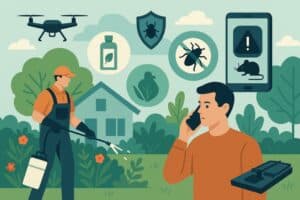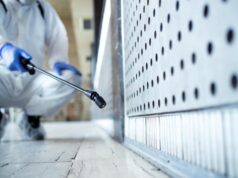Innovative pest control is critical in maintaining healthy ecosystems in residential and commercial environments. As pest pressures evolve due to changing climates and urbanization, traditional methods often fail to address new challenges. Forward-thinking approaches—such as integrated pest management (IPM), targeted biological controls, and data-driven monitoring—ensure long-term effectiveness while minimizing harm to people, pets, and pollinators.

A key area where innovation is especially valuable is in lawn and ornamental pest control. Managing pests in these spaces requires strategies that protect aesthetic value without disrupting surrounding vegetation or beneficial insects. Techniques like precise application timing, pest-resistant plant selection, and eco-friendly treatments help maintain vibrant landscapes while preventing the overuse of broad-spectrum chemicals that can lead to resistance or environmental harm.
Understanding the Threats: Common Pests and Their Impact
Pests such as cockroaches, rodents, and termites are present almost everywhere and pose various degrees of threat. For example, rodents can carry leptospirosis and hantavirus, highlighting the need for effective rodent control strategies. Conversely, cockroaches are well-known allergens and can exacerbate asthma symptoms, especially in children. Termites can silently erode the structural integrity of buildings, leading to costly repairs if not identified and controlled promptly. Therefore, understanding these threats and their impact is vital for homeowners and businesses to implement timely and appropriate pest control measures.
Eco-Friendly Pest Control Solutions
In recent years, increased environmental awareness has resulted in a rise in eco-friendly pest control solutions emphasizing natural and less harmful methods. Common approaches include natural predators, botanical-based pesticides, and integrated pest management (IPM) practices. These strategies safeguard the environment and promote the long-term health of gardens, agricultural fields, and urban landscapes. This holistic approach ensures sustainable, environmentally friendly, and effective pest control measures.
The Role of Technology in Modern Pest Control
The advancement of technology has significantly influenced pest control methods. Smart pest monitoring systems and AI-driven data analytics improve the prediction and management of pest behavior. Smart traps equipped with sensors can detect pests and send real-time alerts to smartphones, allowing immediate response. Drones are utilized for large-scale surveillance, offering a bird’s-eye view of pest activity. These technological solutions enhance pest control operations, improving efficiency and minimizing the difficulties associated with traditional pest management.
DIY Pest Control Tips for Homeowners
Homeowners can maintain a pest-free environment without the need for professional services. To accomplish this, maintain a clean and organized home by consistently keeping food in airtight containers, disposing trash, and refraining from leaving dirty dishes in the sink overnight. Close off entry points, like cracks and holes, and utilize natural repellent options such as peppermint and eucalyptus oils to deter spiders and rodents. Additionally, diatomaceous earth can serve as an effective first line of defense against ants and crawling insects.
Professional Pest Management: When to Call the Experts
Homemade remedies can successfully handle pest issues, but expert pest control services are typically required for severe infestations or resistant pests such as bed bugs and termites. These professionals possess the expertise and equipment to assess the situation, recommend the best-integrated pest management plan, and perform the required treatments. Understanding when to call in the experts helps manage your environment efficiently and saves you from incurring long-term damage costs.





